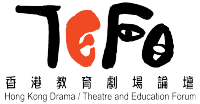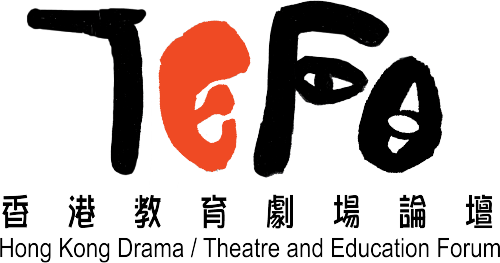Archiving and reporting on the arts is just as important as the execution of artistic practice by itself.
The archival and recording of theatrical work may not be a part of creating the actual work, but it makes sure that theatrical happenings live beyond their ephemerality.
Careful recording and detailed reflections are extensions of the creative process behind any performance, educational program or workshop, and can become valuable learning resources for the entire field.
At TEFO, we’ve always been thinking about how to fulfill our responsibility to develop ourselves as a networking and consulting organization for other practitioners in this field, and we hope that the principle of “Shared Knowledge” can continue carrying us forward in this work.
Thus, we are continually working to strengthen our online database’s ability to gather, organize and preserve applied theatre practice here in Hong Kong, so that our field’s research, records and archives can inspire present and future generations of applied theatre practitioners.
Please note that our English database is still under construction, and there may not be as much content as our Chinese database. For more resources, please visit the Chinese version of our website.
Looking Yonder: a Model of Arts Engagement with Teacher Artists and Professional Artists in Queensland Schools | DaTEAsia Vol. 4
Since 2007 Kite Arts Education Program (KITE), based at Queensland Performing Arts Centre (QPAC), has been engaged in delivering a series of theatre-based experiences for children in low socio-economic primary schools in Queensland. KITE @ QPAC is an early childhood arts initiative of The Queensland Department of Education that is supported by and located at the Queensland Performing Arts Centre. KITE delivers relevant contemporary arts education experiences for Prep to Year 3 students and their teachers across Queensland. The theatre-based experiences form part of a three year artist-in-residency project titled Yonder that includes performances developed by the children with the support and leadership of Teacher Artists from KITE for their community and parents/carers in a peak community cultural institution. This paper provides an overview of the Yonder model and unpacks some challenges in activating the model for schools and cultural organisations.
Children Create Their Own Drama with the Help of the Teacher: An Action Research on the Curriculum Implementation of Theme-Integrated Drama in Preschools in the Mainland China|DaTEAsia Vol. 3
The action research conducted here on the curriculum implementation of Theme-integrated Drama in preschools in the Mainland China aims to find out how, with the guidance of the teacher, children create their own drama works by integrating their experience in drama expression, drama creation and drama performance. To implement the curriculum, different themed drama activities are often designed for different age groups; for example, “Trees and Birds” for the class of five to six year olds. Such activities include three phases. In the phase of drama expression, children in particular roles have an opportunity to express their views of the surrounding world. Then the children are encouraged to create plots and scenes around a conflict where their role is dramatized, and then to discover and solve problems. This is the phase of drama creation. In the last phase, previously acquired experience in drama expression and drama creation are integrated into the drama performance. Through that experience children gain a sense of accomplishment when presenting their own drama works in front of the audience.
Drama Appreciation in Children Aesthetic Education: A Case Study on Creative Drama|DaTEAsia Vol. 2
A case study adopted to investigate a teaching artist’s implementation of integrating creative drama as teaching strategies into the aesthetic education to promote drama appreciation in kindergarten. The purposes of the research included the exploration in the application of drama strategies in education curriculum, the feasibility on the usage of creative drama in inducing drama appreciation, and the resulting learning outcomes on students.




